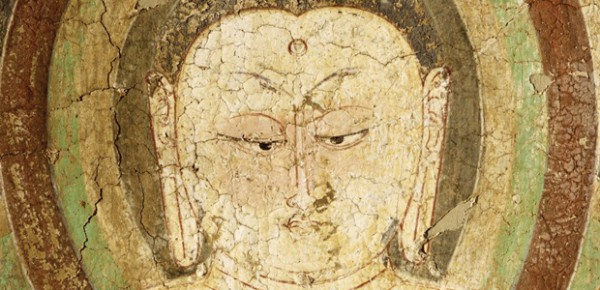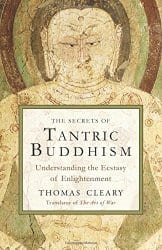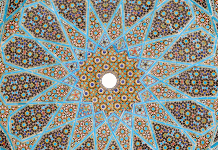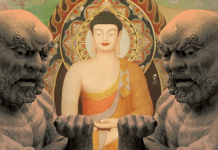
 The Secrets of Tantric Buddhism: Understanding the Ecstasy of Enlightenment, by Thomas Cleary
The Secrets of Tantric Buddhism: Understanding the Ecstasy of Enlightenment, by Thomas Cleary
Weiser Books, 9781578635689, 226 pp., 1998, 2014
The Secrets of Tantric Buddhism is collection of 46 writings from more than 20 prominent siddhis within the Carya-Gira from the 10th century, translated by Thomas Cleary. The mystic poets discuss the nature of reality, the processes of the self, and the path to enlightenment, often framed as the relationship between the practitioner, and a beloved partner (representing at different times reality, self, or enlightenment). These writings are a form of mystic poetry, not surprisingly very reminiscent of the Bhakti devotional mystical poetry from Bengal.
Cleary does a great job with translating the poetry, always a more difficult text than translating prose, especially when the poetry is focused towards an abstract mystical understanding. Each section contains the poem as a whole, and then over the course of the next few pages it is pulled apart and built upon a few lines at a time. While the book comes with an introduction, I wish Cleary had spent more time explaining who the poets were, as well as his process of translation.
Mystical poetry is hard to translate, and as both a Buddhist and someone with an English degree with a focus on poetry, I would love to know how Cleary came to his translations. Sometimes a similar image could appear in multiple poems, but according to Cleary’s analysis they meant different things, and while I do not disagree with his conclusions, as he makes a good case for them, I would love to know how he knew what the number three meant (for example) in any particular poem; when it represented Vajrapani, Manjushri, and Chenrezig, when it was Body, Speech, and Mind, and when it was Greed, Hatred, and Delusion. While sometimes poetry that comes with an interpretation seems limited, in this case I feel that too much of the text would be glossed over or misunderstood if not for the assistance of Cleary.
As with non-mystical poetry (and perhaps more so), this book is not one that is best merely read. This is a book to be savoured slowly, to read a poem or two a day, and spend time sitting with the imagery to see what comes up. It should almost be as much of a meditation, as it is reading. The poetry is not just a little abstract, but sometimes challenging to reason. They are occasionally reminiscent of Zen koans, where the question or poem itself is meant to challenge, open, and awaken the mind.
Cleary’s ability to help the reader understand the complex nature of the poetry is supported by using koans and other forms of mystical poetry (such as Sufi poetry) to illustrate similarities in thoughts and the same idea from another perspective. In a very few cases I felt the supplementary poetry confused more than it helped, but considering the deliberateness of the choices I also suspect that a bit more meditation on the poetry would help me past this issue.
Perhaps the biggest issue with the text is its title. The works discussed are not exactly secret, and nothing discussed in the book is secret or obscure. The title sounds as if it is either an exposition, or an instruction manual, rather than a collection of mystical poetry. So as a heads up, if you are really looking for a book on the secrets or techniques, this is not such a book.
Due to the depth of the poetry, the imagery and experiences may be too confusing for a beginner, but if one already has a solid foundation in Buddhism, then The Secrets of Tantric Buddhism will be useful to go through and meditate on.








